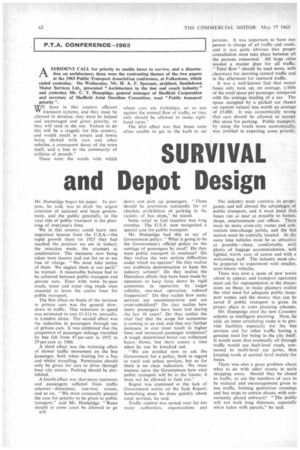P.T.A. CONFERENCE - 1963 A STRIDENT CALL for priority to enable buses to
Page 64

If you've noticed an error in this article please click here to report it so we can fix it.
survive, and a dissertation on architecture; these were the contrasting themes of the two papers at the 1963 Public Transport Association conference, at Folkestone, which ended yesterday. On Wednesday, Mr. H. A. F. Spooner, architect, Southdown Motor Services Ltd., presented " Architecture in the bus and coach industry"
and yesterday Mr. C. T. Humpidge, general manager of Sheffield Corporation and secretary of Sheffield Joint Omnibus Committee, read "Public transport priority ".
WE have in this country efficient VV transport systems, and they must be allowed to develop; they must be helped and encouraged and given priority, or they will tend to die out. Failure to do this will be a tragedy for this country, and would result in streets and towns being choked with cars and other vehicles, a consequent decay of the town itself, and a loss to the community of millions of pounds."
These were the words with which where cars are forbidden, or to run against the normal flow of traffic, or they only should be allowed to make righthand turns."
The fifth effect was that buses were often unable to get to the kerb to set
persons. It was important to have one person in charge of all traffic and roads, and it was quite obvious that proper consultation must take place between all the persons concerned. All large cities needed a master plan for all traffic. "Tidal flow" should be used more, with clearways for morning inward traffic and in the afternoon for outward traffic.
It was a well-known fact that motor buses only took up, on average, 1/50th of the road space per passenger compared with the average loading of a car. The space occupied by a parked car (based on current values) was worth an average of £5,000. It was economically wrong that cars should he allowed to occupy this space for parking. Public transport, by using the roads more economically, was justified in expecting some priority.












































































































